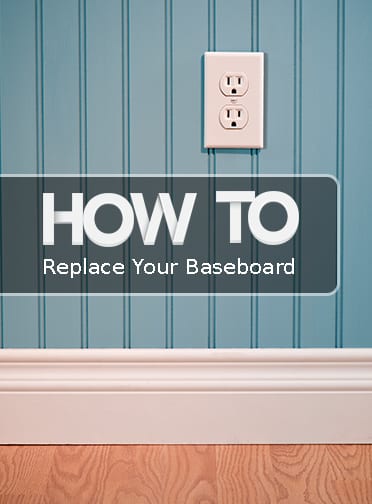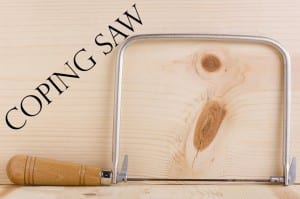This is a project I really love doing. There are a couple reasons, first of all, it is not very difficult changing out baseboards, it is a very forgiving project, the walls are rarely straight and the joints never seem to come together in reality like they do on the DIY channels, but if you finish it correctly it is nearly impossible to notice those imperfections. Also, I think nice new base can really change the feel of a room. I am a big fan of the tall baseboard, everything in my house is 6” or higher, I think it can dress up a room quickly to upgrade the baseboards.
Here is how I do baseboard, there are several different methods and ideas on how these should be done, but this has always worked for me.
Start by removing the old baseboard: to do this take a razor blade and cut through the old caulking at the top of the baseboard and the wall. This will make it easier to remove the old baseboard and will keep from pulling the paint off the wall. Then take a pry-bar and pry off the existing. One of the reasons that I like to replace baseboard with taller new base is because then you do not see any damage you may do to the wall when removing the old base.
Remove or pound in any nails that may have stayed in the wall instead of coming out with the base.
Begin cutting and nailing up the new baseboard. The standard method for doing 90 degree joints is to do what is called a coped joint. This is where you cut the first piece and butt it up to the wall then the next piece is cut at a 45 degree angle and with a coping saw you trace along the front edge made with the saw. You can clean it up with a round file afterwards for a snug fit, but this joint will keep together despite expansion and contraction.
I put a nail in the bottom of the baseboard so it hits the 2×4 on the floor and then I just run my stud finder along the wall trying to hit the majority of the studs on the top of the baseboard as well. It is not absolutely necessary to hit studs, but it doesn’t hurt either.
Next you are ready to caulk, I caulk all the nail holes and along the top of the baseboard. It helps to wet your finger to keep the caulk from sticking to your hand.
There are differing opinions on painting before you install or after. I prefer after so that I have a nice straight line painted over the caulk but if you are painting your baseboard white it is difficult to see the caulk anyway.
So as you can see this is not a terribly difficult project, and can be done over a weekend.
If you have recently upgraded your baseboard and would like to feature it on my website please send in photos and I will feature your project.


